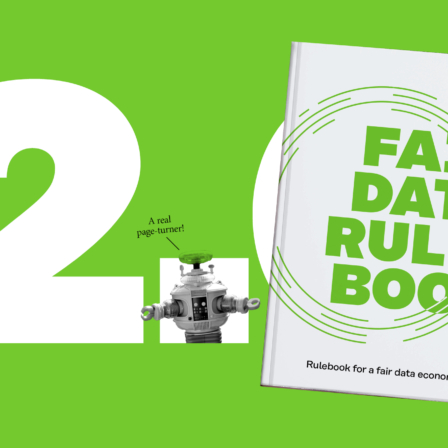The only constant in the business environment is change
Constant and increasingly rapid changes and crises have a strong impact on the behaviour of customers. A topical example is the Covid-19 crisis, which has contributed to revealing – in an exceptionally quick and transparent manner – the problems in the current rigid operating models. In addition, and notwithstanding the ongoing health crisis, consumption habits are also changing and consumers are becoming ever more demanding when it comes to the products and services they buy.
Responding to changes in consumer behaviour and demand is challenging for traditional companies, which need to maintain a balance between the flexibility of the supply chain and sustaining competitiveness. Companies must find new ways to adapt their operations to new situations, no matter what the reason for change is.
One solution on offer for companies is the open ecosystem model, which relies on the sharing of data and dynamic partnerships. In an open ecosystem, companies can build or join a digital value creation network. One such operating model is featured in the report “The Ecosystem Pattern – Systemic abstraction of open digital network architecture” by Petri Laine and Kari Uusitalo.
The platform economy is an intermediate phase on the journey to an ecosystem economy
The report discusses in particular the value chain models of the past and the platform business models of the future. With platform-based business models, companies share value together, led by one strong operator, unlike in the traditional supply chain where companies create value for customers independently.
The vulnerability of the traditional supply chain stems from its rigidity and excessive specialisation. When it comes to platforms, the biggest challenge identified is the unilateral distortion of competition from the market point of view, because one aspect strongly associated with platforms is the owner’s control over the relationships between the members operating on the platform and over business resources, such as data.
According to the report, the transition from traditional value chains to a platform economy is an necessary intermediate phase before the transition to open business ecosystems. Open ecosystems emphasise the comprehensive value creation among ecosystem members instead of the interests and wishes of single members.
The model outlined in the report is one of the first preliminary attempts to define ecosystems systematically and has a solid research-based foundation that should be used and refined.
A new operating model is based on open ecosystems – the ecosystem pattern
Open ecosystems do not have an owner or a defined organisation. These ecosystems are open to everyone and their operations are market-based and guided by open, shared data. In an open ecosystem, networks are more flexible and innovative than in closed ecosystems. Networks and companies operating in them are capable of responding to customer demand better.
The report’s authors also describe an ecosystem pattern based on open ecosystems, which is, in practice, a simplified systemic model of an open digital network architecture. The starting point of open ecosystems is the joint development of the shared business models and architecture of the ecosystem and those of the ecosystem members.
The ecosystem pattern introduces a new strategic set-up, which makes it possible for network members to rearrange themselves more flexibly and sustainably within the network. According to the report, this characteristic provides the companies participating in a value creation network with the means to respond in a more agile manner to both crises and ever-changing customer demand.
Flexibility also creates new kinds of business opportunities for companies when not all value needs to be created in-house but partners can be used in this instead. Sitra’s Rulebook for a Fair Data Economy is one of the key tools for when the open ecosystem network structures are formed and maintained based on trust.
The transition to open ecosystems requires a change in mindset from companies because the management can no longer pay attention just to their own company as before. Decision-makers must open up their minds to cover an increasingly extensive value creation network formed by the company and its partners. This allows companies to move from a “me” mindset to a “we” mindset, which enables a new kind of competition between companies as well as co-operation that benefits all. The open ecosystem paradigm can be turned into business locally and then scaled up from small entities to global phenomena when the pattern is reapplied.

















Recommended
Have some more.